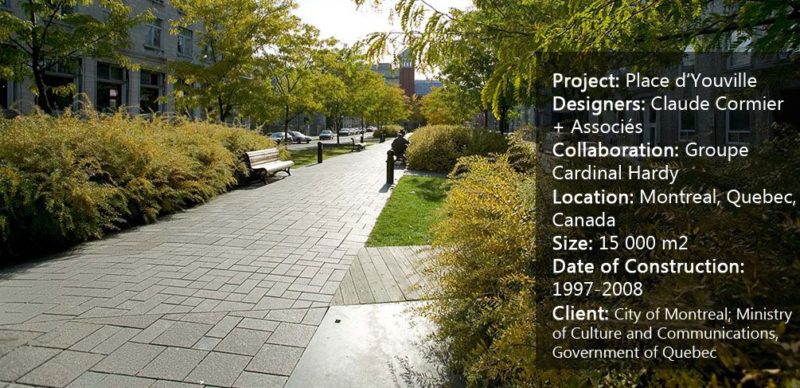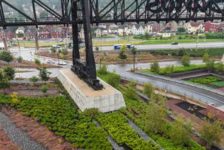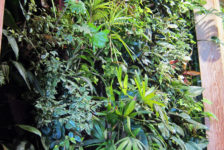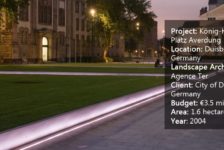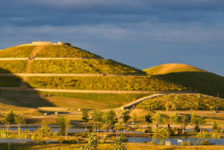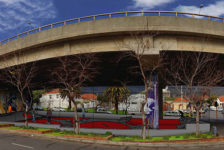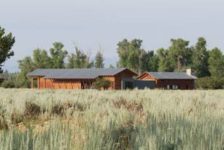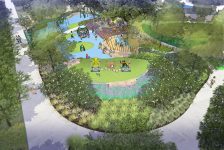Place d’Youville in Montreal, Quebec, Canada design by Claude Cormier + Associés. What is landscape architecture, really? Perhaps one of the most difficult and frustrating parts of the landscape architecture profession is the fact that very few people understand what it is that we really do. No, we are not landscapers or gardeners, and while we do also work in small gardens, our scope and understanding is far greater. Landscape architecture is the understanding of the complex nature of a site: the dynamic relationship between the natural and the built environment and the overlaying of the cultural context. “artificial, not fake” Canadian landscape architect Claude Cormier has begun to challenge this notion by embracing the constructed landscape and celebrating the artificial. His philosophy of “artificial, not fake” falls under the “conceptualist” movement, prioritizing the concept or big idea as the driving force behind a project.

Sugar Beach at night by Claude Cormier + Associés. Photo courtesy of Claude Cormier + Associés.
This movement was initiated by his mentor, Martha Schwartz, and through the focus of design process has removed itself from the functionalism of the modernist movement and placed landscape architecture firmly within the contemporary urban environment.
Bring Humor and Playfulness to the Landscape Cormier’s work has begun to push the limits of landscape architecture by introducing humor and playfulness in order to reinvent urban landscapes. His work includes installations of urban props, such as blue sticks or pink balls, and playful urban beaches in unusual city spaces. His focus is artificial, yet dynamic in its ability to become something sculptural with performance art qualities.
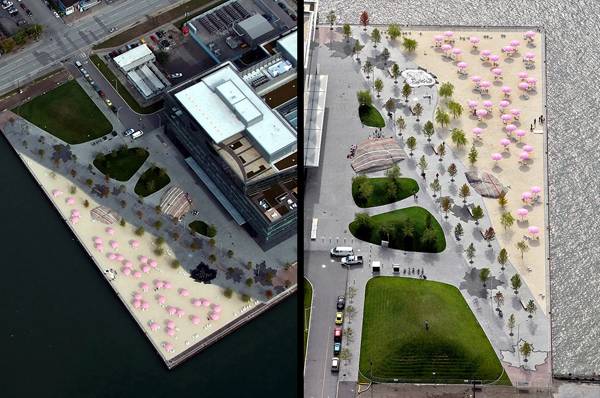
Birds eye view of Sugar Beach with mounds. Photo courtesy of Claude Cormier + Associés.
Place d’Youville
Cormier (in collaboration with Groupe Cardinal Hardy) has adopted this approach in his recent project, Place d’Youville in Montreal, Quebec. Place d’Youville is a historical square in Montreal and forms the meeting point of important roads at the gateway to the city’s waterfront and old port.
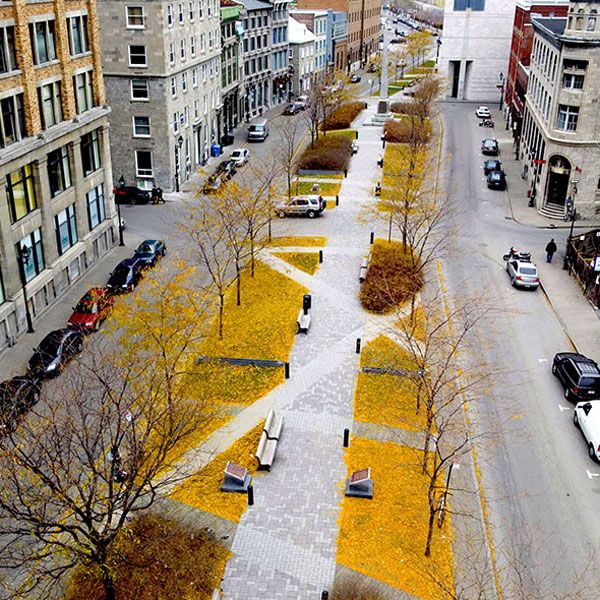
Place d’Youville. Photo courtesy of Claude Cormier + Associés.
(one of the city’s first residents), the site provides an important place of archaeological important and cultural heritage. The project is undeniably urban, and while it contains a large amount of green space, its focus is on materiality, memory, and the choreography of human movement. It does not pretend to be an inner city linear park or an active city square.
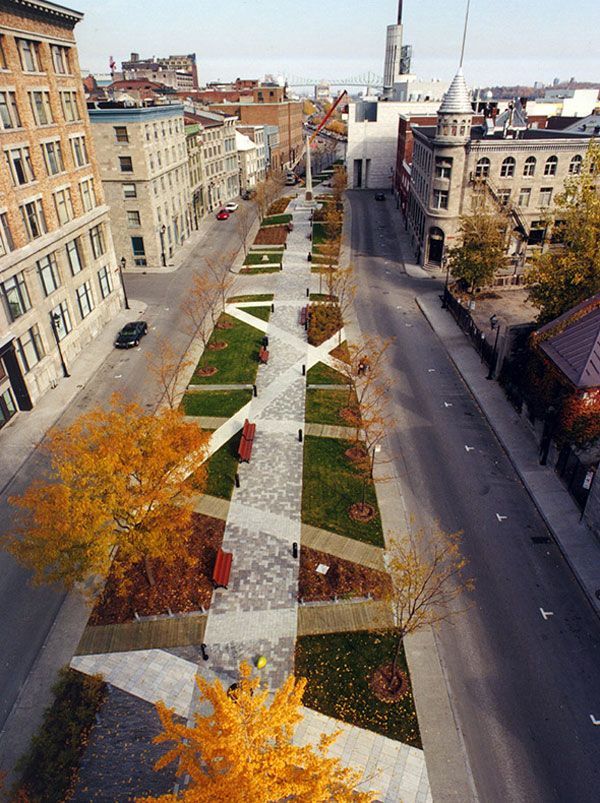
Place d’Youville. Photo courtesy of Claude Cormier + Associés.
Envisioned as a protective blanket of pedestrian walkways, the project responds to the archaeological memory of the site through materials and textures while recreating the 500-year-old sidewalk construction in the city. Angular pathways connect to the access points for museums, offices, restaurants, and residential units and represent their movement functions through timber boardwalks (domestic), concrete (commercial), and granite or limestone (institutional).
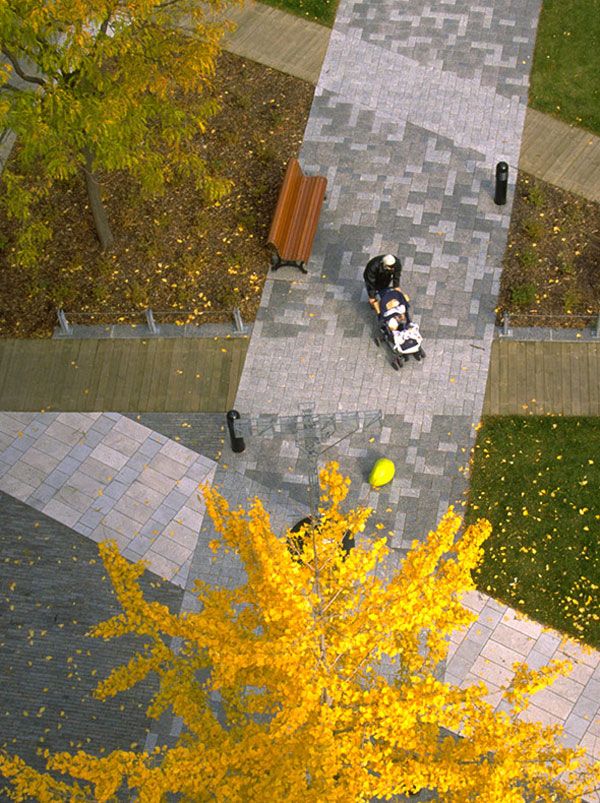
Place d’Youville. Photo courtesy of Claude Cormier + Associés.
A central pathway of mixed paving colors functions as a pedestrian collector and references the stream — the Petite Reviere — that runs beneath its hardened surface. Even the placement of the trees responds to archaeological sites as the trees preserve access holes for future artefact excavation.
Design Philosophy: “If you do too much it just becomes noise” Cormier has aimed to apply his conceptualist approach to Place d’Youville by marrying the graphic and visual aesthetic with the experience of movement and materials.The first aspect of Cormier’s design philosophy is his firm belief that a project’s success lies in a singular focus and the idea that if you do too much it “just becomes noise”.

Place d’Youville. Photo courtesy of Claude Cormier + Associés.
Although Cormier’s background is in plant breeding, he has directly admitted to preferring to work with inanimate elements due to impatience with the process of habitat growth and creation.
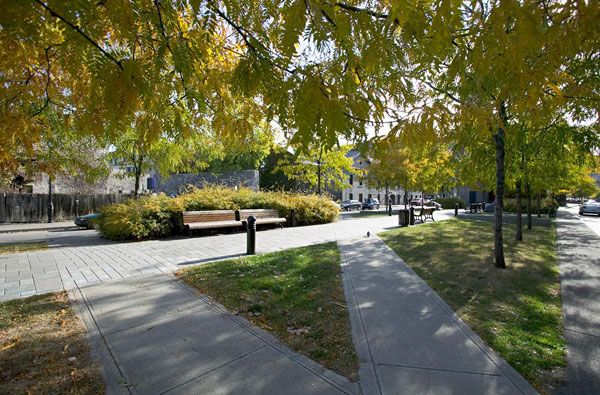
Place d’Youville. Photo courtesy of Claude Cormier + Associés.
Cormier does not invite you to like his work, but rather invites you to question the meaning behind it and desire to experience the space. One cannot help but feel that it is impossible to critique the space until you have walked the textured paths and sat beneath the leafy trees.
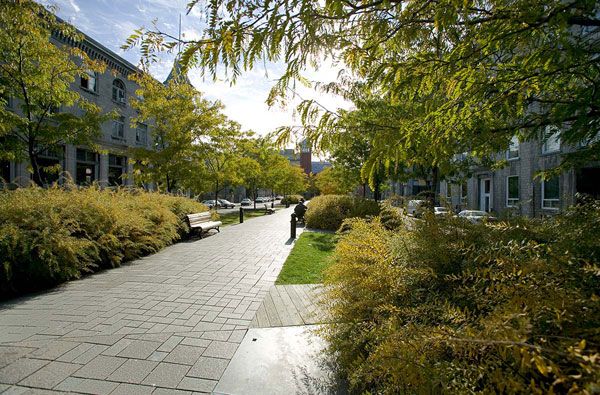
Place d’Youville. Photo courtesy of Claude Cormier + Associés.
Cormier has labeled his office as “Landscape Architecture – Urban Design”, aiming to provide bridges among urban design, public art, and architecture. He does not pretend to adopt the multidisciplinary focus of approaches such as landscape urbanism, but rather explores the possibilities within the urban landscape. His work has in fact married urban design with landscape architecture in a manner that has created something quite controversial and undoubtedly different.
Awards for Place d’Youville
Canadian Society of Landscape Architects, Regional Honor – Place D’Youville, Old Montreal, Canadian Society of Landscape Architects, National Merit – Place D’Youville, Old Montreal. Recommended Reading:
Article by Rose Buchanan. Return to Homepage
Published in Blog









